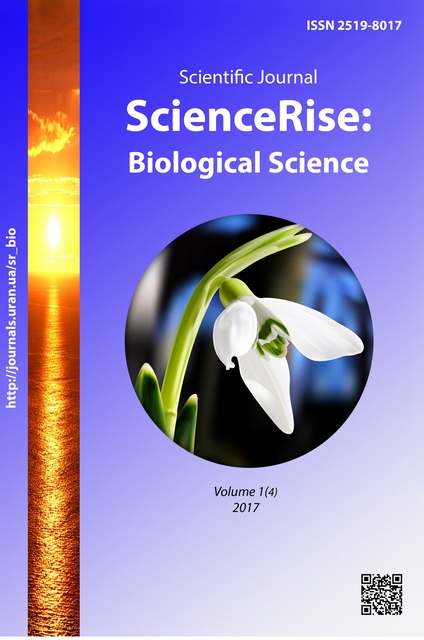The state of natural leptospirosis cells activity and functioning in the dry steppe zone of the Northwest Black Sea region
DOI:
https://doi.org/10.15587/2519-8025.2017.93634Keywords:
enzootic functioning, cells, leptospirosis, natural infectionAbstract
The territory of arid steppe terrain in climate and landscape social conditions largely determines the capacity and activity of local cells of leptospirosis.
The features of enzootic functioning of cells in different landscape areas have the key meaning in the epidemic estimation of the territory that requires detailed knowledge of ecological, landscape and biocenotical geographical specificity of circulation circles of pathogen leptospirosis. On the basis of serological control of rodents and reporting data of laboratories SES about the results of analytical studies was made the analysis of eco-social nature of epizootic manifestations of natural infection in the region and established that a key role belongs to economic and socio-economic factors, the effect of which covers the entire research area and changes spatial, structure and etiological structure of natural cells of leptospirosis
References
- Vasylyuk, O. V., Yena, A. V., Kuzemkova, A. A. et. al.; Burkovskyi, O. P. (Ed.) (2013). Last steppes of Ukraine: to be or not to be? [Last steppes of Ukraine: to be or not to be?]. Kyiv, 44.
- Mordkovich, V. S. (2014). Stepnye ecosistemy [Steppe ecosystems]. Novosibirsk: Academic Publishing House "Geo", 244.
- Ruchyn, A. B. (2006). Ekologiya populyatsy i soobshestv [Ecology of populations and communities]. Moscow: Academy, 352.
- Naumov, N. P. (1963). Ekologiya zhyvotnyh [Ecology of animals]. Moscow: Science, 619.
- Oleksenko, O. V. (2004). Zakonomirnosti epidemichnogo protsesu leptospirozu v Ukraini [Mechanisms of the leptospirosis epidemic process in Ukraine]. Coliection of scientific works of staff member of P. L. Shupyk NMAPE, 1, 690–694.
- Havura, V. V., Oleksenko, O. V. (2003). Evolutsiya epidemichnogo protsessu leptospirozu v Pivnichnomu regioni Ukrainy [The evolution of the leptospirosis epidemic process in the Northern region of Ukraine]. Medicines of Ukraine, 7-8, 51–52.
- Tarasova, V. V. (2008). Ekologichna statystyka [Environmental statistics]. Kyiv: Center of educational literature, 392.
- Yerina, A. M. (2001). Statystychne modeluvannya ta prognozuvannya [Statistical modelling and forecasting]. Kyiv: KNEU, 170.
- Nakonechny, I. V., Serebryakov, V. V. (2012). Vozbuditeli prirodnyh infektsiy v ekosistemah yuga Ukrainy [Natural infectious agents in southern ecosystems of Ukraine]. Kyiv: Tofi Kime, 225.
- Description – Introduction (2009). Global Historical Climatology Network-Daily. Available at: https://www.ncdc.noaa.gov/oa/climate/ghcn-daily
Downloads
Published
How to Cite
Issue
Section
License
Copyright (c) 2017 Svitlana Sushko

This work is licensed under a Creative Commons Attribution 4.0 International License.
Our journal abides by the Creative Commons CC BY copyright rights and permissions for open access journals.
Authors, who are published in this journal, agree to the following conditions:
1. The authors reserve the right to authorship of the work and pass the first publication right of this work to the journal under the terms of a Creative Commons CC BY, which allows others to freely distribute the published research with the obligatory reference to the authors of the original work and the first publication of the work in this journal.
2. The authors have the right to conclude separate supplement agreements that relate to non-exclusive work distribution in the form in which it has been published by the journal (for example, to upload the work to the online storage of the journal or publish it as part of a monograph), provided that the reference to the first publication of the work in this journal is included.









